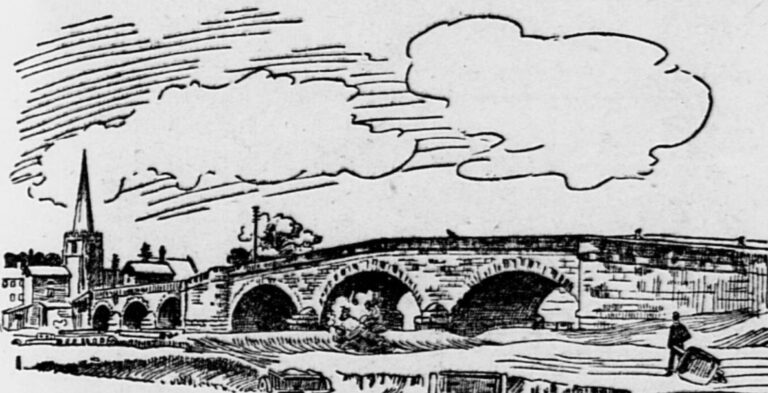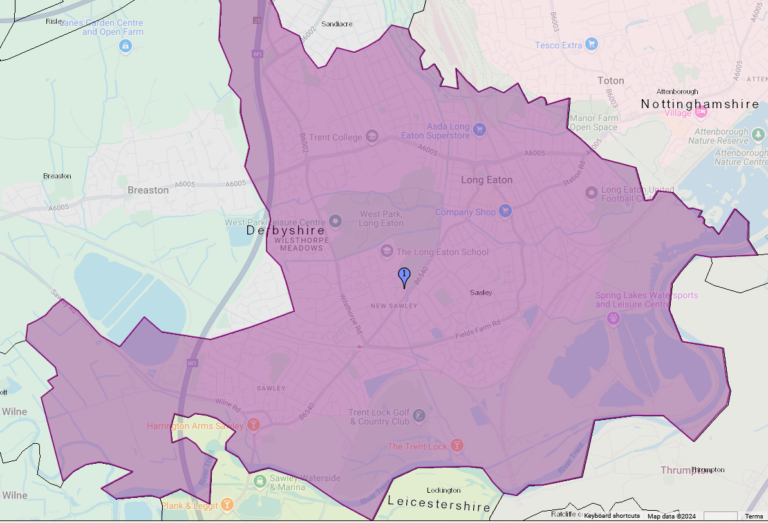Eighteenth Century
With the industrial revolution in the West Midlands, the road from Nottingham to Birmingham became busier and busier, and in 1759 the stretch between Lenton and Sawley became a turnpike (a road with an improved surface maintained by a private company which levied tolls on user).
Prior to this, by a statute of 1555, the parish was responsible for their roads and an elected ‘surveyor’ could call on every man and boy to work 4-6 days a year maintaining the roads within the parish. For this purpose, the people of Sawley had a right to get gravel from the banks of the Trent.
The Harrington Arms became an important coaching inn, and there was increased passing trade in the other public houses. It may be this improvement that led to the revival of Sawley Market in 1760. The Sawley Ferry was seen to be inadequate for the growing traffic, and in 1790 the Harrington Bridge was built.
In the early 18th century mail was carried by mounted post boys, but after the turnpikes these were replaced by mail coaches. In Sawley these stopped at the Harrington Arms, which had stables and a large courtyard. In 1793 a coach left Nottingham for Birmingham daily. By the early 19th century four coaches a day plied the same route, stopping at the Harrington, as did carriers from Nottingham to Castle Donington and Ashby.
The 18th century also saw improvements to navigation on the River Trent, plus the opening of the Trent & Mersey canal (1777), the Soar Navigation, the Erewash Canal (1779), and the Derby Canal (1795). Newly built weirs were bypassed by two short canals, the Sawley Cut and Cranfleet Cut.
The Sawley Baptists, one of the oldest-established Nonconformist organisations in the East Midlands, were first formed in 1766. The Baptist Chapel was erected in 1800.

By 1789 the Parish of Sawley contained the chapelries of Wilne, Long Eaton, Breaston and Risley and the hamlets of Draycott and Hopwell. Of the 406 houses in the Parish, 78 were in Sawley, 105 in Long Eaton, 109 in Draycott, 11 in Wilne, 4 in Hopwell, 61 in Breaston and 38 in Risley.

Nineteenth Century
Before the arrival of the railways in the 1830s, coal supplies for Sawley were brought by a team of donkeys carrying panniers. The amount of coal used was less than other places at the time as many villagers burnt wood and employed their spare time in “sticking ” by the river.
In 1846 there were 1018 people living in Sawley, in 238 houses (Long Eaton had 859 people in 184 houses). There were 2 small libraries and 4 sick societies.
The road was de-turnpiked in 1871 and the Harrington Bridge toll was removed in 1882.
The Sawley Co-operative Society opened its first shop on Bridge Street in 1873 and existed as an independent society for 20 years. However, in 1895 it became involved in a dispute with the Long Eaton Co-operative Society as to which society’s area covered Trent Lock. After this, Sawley became part of the Long Eaton Co-operative Society’s area.
The Trent Valley Sailing Club was formed in 1886, starting on what was called Trent Lake, one of the railway ballast holes and now filled in – today it forms part of the Trent Lock Golf course. The sailing club moved to its present headquarters, a wooden construction that is one of the finest modern buildings in Sawley, in 1907.
